Intermatic ETW3CP Bedienungsanleitung
Intermatic
Nicht kategorisiert
ETW3CP
Lies die bedienungsanleitung für Intermatic ETW3CP (12 Seiten) kostenlos online; sie gehört zur Kategorie Nicht kategorisiert. Dieses Handbuch wurde von 3 Personen als hilfreich bewertet und erhielt im Schnitt 4.9 Sterne aus 2 Bewertungen. Hast du eine Frage zu Intermatic ETW3CP oder möchtest du andere Nutzer dieses Produkts befragen? Stelle eine Frage
Seite 1/12

Intermatic Connect 365-Day
Programmable Smart Wi-Fi Timer
Installation and Setup Instructions
Description
Intermatic ETW2CP and ETW3CP Smart Timers offer a multi-
purpose solution for indoor and outdoor load control
applications. Available in a 2-circuit and 3-circuit conguration,
these controls provide exible 365-day, Astronomic, and
Holiday programming options.
Once onboarded to a wireless network, the ETW2CP/ETW3CP
can be controlled using the Intermatic Connect app, available
via Google Play and the App Store. Units can be eld
congured for either single-pole or double-pole applications
and be used for 120-277 VAC. The controls also include
terminal locations for line voltage overrides.
Federal Communications Commission (FCC) Notice for ETW Series Wi-Fi Timers
This device complies with part 15 of the FCC rules. Operation of this device is subject to the following two conditions: (1) This device may not cause
harmful interference, and (2) This device must accept any interference, including interference that may cause undesired operation. This equipment
has been tested and found to comply with the limits for a Class A digital device, pursuant to Part 15 of the FCC Rules. These limits are designed to
provide reasonable protection against harmful inter ference when the equipment is operated in a commercial environment. This equipment
generates, uses and radiates radio frequency energy and, if not installed and used in accordance with instructions, may cause harmful interference
to radio communications. Operation of this equipment in a residential area is likely to cause harmful interference that requires the user to correct
at his or her own expense.
MODELS: ETW2CP, ETW3CP
NOTICE
• Do NOT touch circuit board components, contact can create a static discharge, which can damage these electronic components.
• Disconnect power at the circuit breaker(s) or disconnect switch(es) before installing or servicing.
• More than one circuit breaker or disconnect switch may be required to de-energize the equipment before servicing.
• For plastic enclosures, bonding between conduit connections is not automatic and must be provided as part of the installation.
• Installation and/or wiring must be in accordance with National and Local Electrical Code requirements.
• Use #14-#8 AWG wires, rated at least 105° C - COPPER conductors ONLY.
• If the power disconnect point is out of sight, lock it in the OFF position and tag it to prevent unexpected application power.
• Make sure there is no wire insulation under the terminal plate on the time switch connector. Firmly tighten terminal screws.
• For outdoor locations or wet locations (rain-tight), conduit hubs that comply with requirements of the UL514B (standard for fitting conduit
and outlet boxes) are to be used.
• Do NOT exceed maximum current carrying capacity.
• KEEP DOOR CLOSED AT ALL TIMES when not servicing.
Risk of Fire or Electric Shock
WARNING
ETW3CP
Ratings
Electrical Specifications
Operating Voltage 120-277 VAC, 50/60 Hz
Remote Inputs 120-277 VAC, 50/60 Hz
Load Rating (Motor) 1 HP 120 VAC (NO)
2 HP 240 VAC (NO)
FLA 16 A FLA, 96 A LRA, Type 1C @ 120 VAC 50/60 Hz (NO)
15 A FLA, 96 A LRA, Type 1C @ 240 VAC 50/60 Hz (NO)
Power Consumption 7 W
Electronic Ballast 16 A per circuit (NO)
General Purpose
Current Rating
30 A (NO)
10 A (NC) @ 55° C, 5 A (NC) @ 70° C
Impulse Voltage 4000 VAC
Overvoltage Category III
Pollution Degree 3
Operating Temperature -40º C to 70º C
Control Construction Independently Mounted
Enclosure Type Type 3 Indoor/Outdoor Enclosure
Dimensions H x W x D 7 1/2” x 8 7/8” x 3”

Installation
Follow these instructions to install the timer switch.
1. Open the Smart Wi-Fi Timer enclosure door.
2. Choose and remove the selected ½” to ¾” combination knockout(s) from the enclosure.
There are two on the bottom, one on each side and one on the back of the enclosure.
NOTE: If a ¾” knockout is needed, remove the ½” knockout rst, then the ¾” knockout.
3. Place the enclosure in the desired location providing space for the enclosure door to swing open fully.
4. Mount the enclosure using hardware appropriate for the mounting surface (e.g., brick, concrete, drywall). We recommend using
two of the several 5 mm raised mounting locations in the back of the enclosure rather than the single-location hang slot.
(hardware not included) (Figure 1)
LOCKING HASP
1/2", 3/4" DIA KO
(5 PLACES)
4.80"
4.00"
2.56"
Figure 1
5. Use appropriately rated ttings for the installation.
6. Strip ½” off the supply and load wires. Use AWG #14 - #8 copper conductors rated at least 105º C. Torque 10.6 to 15.6 Lb-In.
7. Connect the wires to the proper terminals on the Wi-Fi timer and tighten the screws rmly (See wiring diagram gures A and B).
8. Close enclosure door.
9. Apply power to the time switch.
10. Install ¼” Padlock thru hasp to secure if desired. (lock not included)
11. Device conguration are done using the Intermatic Connect mobile app. (available via the App Store and Google Play)
Wiring Diagrams
Figure A: 3 Circuit - 3xSPDT or 1xDPDT + 1xSPDT, Circuit 1 and Circuit 2 can be paired for DPDT applications
Figure B: 2 Circuit - 2xSPDT or 1xDPDT, Circuit 1 and Circuit 2 can be paired for DPDT applications
Figure C: Example of wiring a photocontrol, occupancy/vacancy sensor, or a single pole switch requiring a neutral.
Note 1: If using 277 VAC for the remote input terminals, Inputs 1 and 3
or Input 2 alone may be used on model ETW3CP
Note 2: For DPDT operations Circuit 1 and Circuit 2 will be paired
Note 3: If using 277 VAC for the remote input terminals,
Input 1 or Input 2 alone may be used on model ETW2CP
Figure A
120-277 VAC (For 277 VAC see note #1)
NC-1
NO-1 COM1
NC-2
COM2NO-2
CIRCUIT 1
OUTPUT 1
(NO)
INPUT 1
INPUT 2
COM3
INPUT 3
NO-3
NC-3
OUTPUT 1
(NC)
OUTPUT 2
(NO)
OUTPUT 3
(NO)
OUTPUT 2
(NC)
OUTPUT 3
(NC)
L1
POWER TO TIMER
L2/N
120/208/240/277 VAC
(AUTO VOLTAGE,
NO JUMPER REQUIRED)
POWER
TIMER
AC IN
SW3SW2SW1
CIRCUIT 2 CIRCUIT 3
REMOTE INPUT 1 L1
REMOTE INPUTS
REMOTE INPUT 1 N/L2
REMOTE INPUT 2 L1
REMOTE INPUT 3 L1
REMOTE INPUT 2 N/L2
REMOTE INPUT 3 N/L2
Figure B
120-277 VAC (For 277 VAC see note #3)
NC-1
NO-1 COM1
NC-2
COM2NO-2
CIRCUIT 1
OUTPUT 1
(NO)
INPUT 1
INPUT 2
OUTPUT 1
(NC)
OUTPUT 2
(NO)
OUTPUT 2
(NC)
L1
POWER TO TIMER
L2/N
120/208/240/277 VAC
(AUTO VOLTAGE,
NO JUMPER REQUIRED)
POWER
TIMER
AC IN
SW2SW1
CIRCUIT 2
REMOTE INPUT 1 L1
REMOTE INPUTS
REMOTE INPUT 1 N/L2
REMOTE INPUT 2 L1
REMOTE INPUT 2 N/L2
Figure C
120-277V
REMOTE INPUT
PHOTO CONTROL
OR OCC SENSOR
WHITE
RED
BLACK
POWER TO
PHOTO CONTROL
OR OCC SENSOR
N/L2
L1

Scan this qr code to download
the Intermatic Connect App via
the App Store and Google Play
Intermatic Connect App
Scan this qr code to access
the ETW2CP, ETW3CP
Programming Schedule Guide
Online Programming Schedule Guide
Additional Information
Smart Timer Network LED Table
Color – State Description
Off Wi-Fi and Bluetooth not connected
Red - Solid Ready for Wi-Fi and cloud operation but not
currently connected
Red – Slow Blinking System is updating
Blue - Solid Mobile app is connected via Bluetooth
®
wireless
Blue - Fast Blinking Mobile app is connected via Bluetooth
®
wireless and is communicating
Green - Solid Device is Cloud connected
Green - Blinking Cloud-enabled but currently ofine
Smart Timer Mode LED Table
Mode (LED) Description
Manual Mode
(Yellow)
When power is applied to the device: the LED
shall be ON for approximately 1-second. At
which point, the LED will revert to its proper
state.
When the device is in Manual Mode this LED
will be On. When the device is in one of the
other modes, this LED will be Off.
Auto Mode (Green) When the device is in Auto Mode with an
active schedule running: the LED shall be On.
When the device is in the other modes, this
LED will be Off.
Service (Red) When the device is in Service Mode, this LED
will be On. When the device is in one of the
other modes, this LED will be Off.
Yellow Wink
Load LED Table
Circuits LED Description
L1 When Circuit 1 Normally Open (NO) circuit is
energized, LED L1 will be illuminated, when Circuit 1
Normally Closed (NC) Contact is energized, LED L1
will not be illuminated.
[Override] If Circuit 1 is overridden, LED L1 will
blink at a rate 1 second on and 1 second off for the
duration of the override.
Circuit 1 and 2 logically tied together:
If Circuit 1 and Circuit 2 are congured to work in unison,
LED L1 and L2 will be illuminated when both Circuits
1 and 2 Normally Open (NO) contacts are energized.
If Circuits 1 and 2 Normally Closed (NC) contacts are
energized, LED L1 and L2 will not be illuminated.
[Override]. If Circuit 1 or Circuit 1 and 2 are logically tied
together and is overridden (physical input 1, mobile or
Voice UI), LED L1 and LED L2 will blink at a rate 1 second
on and 1 second off for the duration of the override.
L2 When Circuit 2 Normally Open (NO) circuit is
energized, LED L2 will be illuminated, when Circuit 2
Normally Closed (NC) Contact is energized, LED L2
will not be illuminated.
[Override]. If Circuit 2 is congured to operate
independently and is overridden (physical input 2,
mobile or Voice UI), LED L3 will blink at a rate 1 second
on and 1 second off for the duration of the override.
L3 When Circuit 3 Normally Open (NO) circuit is
energized, LED L3 will be illuminated, when Circuit 3
Normally Closed (NC) Contact is energized, LED L3
will not be illuminated.
[Override]. If Circuit 3 is overridden (physical input,
mobile or Voice UI), LED L3 will blink at a rate 1 second
on and 1 second off for the duration of the override.
Produktspezifikationen
| Marke: | Intermatic |
| Kategorie: | Nicht kategorisiert |
| Modell: | ETW3CP |
Brauchst du Hilfe?
Wenn Sie Hilfe mit Intermatic ETW3CP benötigen, stellen Sie unten eine Frage und andere Benutzer werden Ihnen antworten
Bedienungsanleitung Nicht kategorisiert Intermatic
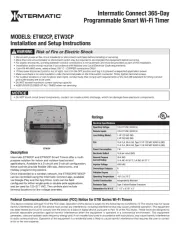
20 Juni 2025

20 Juni 2025
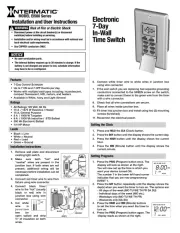
20 Juni 2025
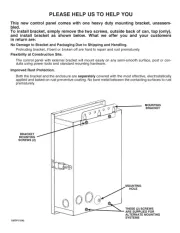
20 Juni 2025

20 Juni 2025
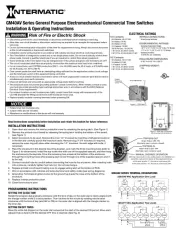
20 Juni 2025
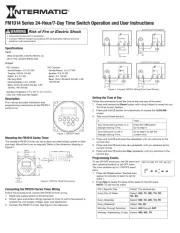
20 Juni 2025

20 Juni 2025
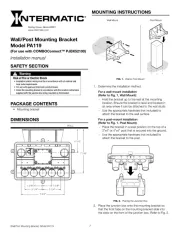
20 Juni 2025
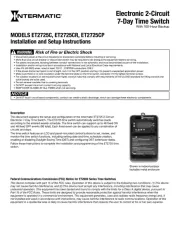
20 Juni 2025
Bedienungsanleitung Nicht kategorisiert
- SE Electronics
- Earbreeze
- Posiflex
- Nobo
- Bomann
- DoughXpress
- Maginon
- Lanzar
- Mermade
- Icarus Blue
- Giga Copper
- Faytech
- Esotec
- Proclip
- Hitron
Neueste Bedienungsanleitung für -Kategorien-

20 Juni 2025
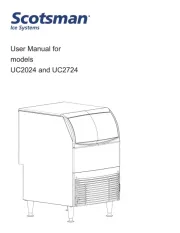
20 Juni 2025
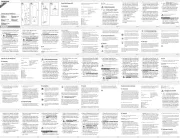
20 Juni 2025

20 Juni 2025
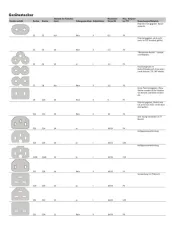
20 Juni 2025
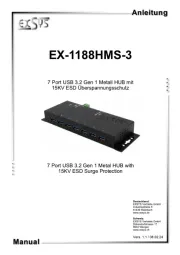
20 Juni 2025
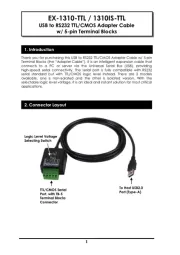
20 Juni 2025
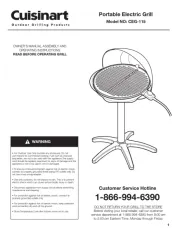
20 Juni 2025
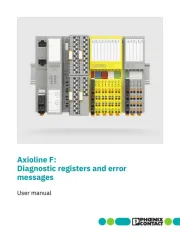
20 Juni 2025

20 Juni 2025